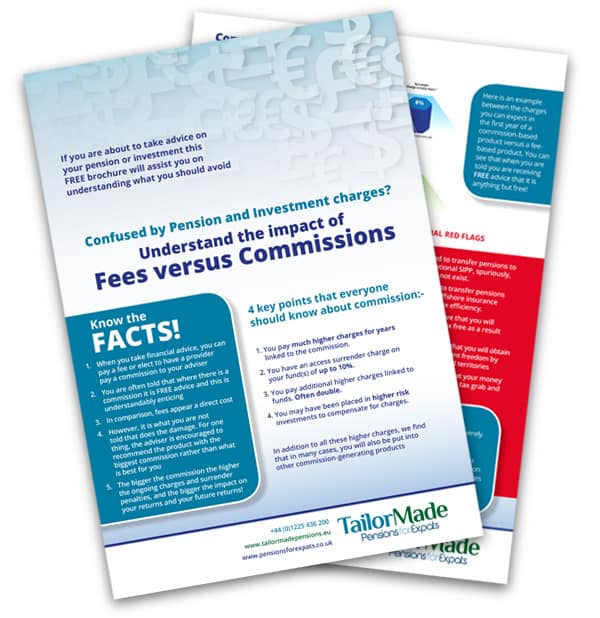
Image by Freepik
Lower taxes in retirement by planning to give wisely
Charitable giving in the U.S. totals over $46 billion annually. Retirees with an average age of 65 are the largest group of donors (Blackbaud Institute) and account for nearly 70% of all charitable giving.
There are over 50 million adults over 65, who control significantly greater assets and net worth than any younger generation.
Interestingly, 85% of today’s retirees are more likely to define success by their generosity, as opposed to 15% who define success by wealth.
Benefits of Giving
Retirees who engage in charitable giving are more likely to report high levels of happiness and a sense of purpose than those who don’t, according to the American Endowment Foundation.
ResearchGate.com concludes that older adults experience more positive effects from both the planning of, and act of, charitable giving than younger individuals.
For example, the physical benefits of charitable giving can result in lower blood pressure, a longer lifespan, less stress, and the ‘helper’s high’.
When helping or giving a gift to someone, the brain secretes “feel good” chemicals, according to the Cleveland Clinic. These include serotonin, which regulates mood; dopamine, which provides a sense of pleasure; and oxytocin, which creates a sense of connection with others.
Limiting Factors
Given all the benefits, and financial ability to give, what limits retirees from making charitable gifts?
One reason is that giving becomes initiated by the person, rather than their employer. Many employees participate in their employer’s charitable giving programs. But, once employees retire, those easy paycheck deduction programs are not at hand.
Another limitation is cash flow, or the lack of it. Without a steady paycheck coming in, many retirees are uncomfortable spending – or giving – until they get used to their new circumstances.
Finally, the tax implications can be difficult to understand. While donations to qualifying charities are deductible, this tax advantage pertains only to those who itemize their taxes — and many retirees don’t itemize.
Hence, the guidance of a professional tax advisor along with a qualified financial planner is essential.
Charitable Gift Annuity
For retirees who like to ‘set it and forget it,’ a charitable gift annuity is a great option. A charitable gift annuity will provide a guaranteed lifetime income for retirement, save money on income and capital gains taxes, and benefit the chosen charity.
Essentially, the donor gives money or assets to a qualified institution. The donor then receives an income for life, based on a discounted value of transferred assets. The assets are retained by the charity when the donor dies.
Ideally, the goal of investing is to have assets gain value over time. The gains will then be a source of income in retirement. However, those gains are taxed.
With a charitable gift annuity in place, donors get a tax break in the year they set up the annuity. Additionally, they earn a partial income tax deduction over time, and, ultimately, do not pay capital gains tax on the eligible portion.
Many universities and nonprofit organizations offer charitable gift annuities. The annuity ties the amount paid to the donor’s age. The spouse can be included in the annuity, but the amount paid is less.
Setting up a charitable gift annuity is a simple transaction and does not create complicated tax or legal issues.
Charitable Remainder Trust
A Charitable Remainder Trust (CRT) is similar to the charitable gift annuity, above.
The income and capital gains tax benefits are similar between the two.
There are two options for a CRT:
- Charitable remainder annuity trusts (CRATs) pay a fixed amount each year, and additional contributions are not allowed.
- Charitable remainder unitrusts (CRUTs) pay a fixed percentage based on the balance of the trust assets (revalued annually), and additional contributions can be made.
Contributions to CRATs and CRUTs are an irrevocable transfer of cash or property, and both are required to distribute a portion of income or principal to either the donor or another beneficiary.
At the end of the specified lifetime or term for the income interest, the remaining trust assets are distributed to one or more charitable remainder beneficiaries.
Stocks and Bonds
Retirees may have a mindset that sees assets in separate classes. For example, they may think in terms of cash, property or other physical assets, and market investments.
When it comes to charitable giving, they may default to writing a check or providing a credit card to donate ‘cash’.
Unfortunately, cash gifts are typically much less efficient from an income tax perspective.
Experts warn against selling an asset and then giving the money to a charity. Rather, it’s better to give stocks, bonds, or other appreciated securities directly to the charity.
The reason for this is that capital gains tax will be charged on the growth of the asset when it is sold.
If, instead, an appreciated security is gifted directly to a charity, the donor and the charity both avoid capital gains tax.
In addition, the donor is then eligible for a charitable income tax deduction equal to the fair market value of the security donated, up to 30% of their Adjusted Gross Income (AGI).
Bunch Donations
A simple, but effective technique to pay less in taxes is called ‘bunching’.
Those willing to itemize their taxes in some years can take advantage of this method of charitable giving.
This plan involves making a charitable donation equivalent to two or more years in one year. With a large enough contribution, the tax deduction will warrant itemizing on taxes that year and receiving the tax benefit.
Then, in the subsequent year, when charitable contributions are not made, there is no need to itemize. The regular standard deduction can be taken.
Donor-Advised Fund
A Donor-Advised Fund (DAF) takes the ‘bunching’ concept even further.
In this case, a formal fund functions like a checking account that is used solely for giving.
Contributions to the fund can be bunched for tax purposes in one year. Then, the actual donations can be designated and dispersed later.
When a large contribution is made to a DAF while the donor is still working and in a high tax bracket, it can reduce the gross adjusted income that year, when it’s the most valuable.
Then, the donor can decide where the money goes later.
Importantly, once money is invested in a donor-advised fund, it can grow tax-free over time, expanding investors’ charitable impact.
Qualified Charitable Donation
Qualified Charitable Donations (QCDs) are direct gifts from an Individual Retirement Account (IRA) to an eligible charity.
There is no income tax paid on the gift amount, so it’s perfect if the retiree intends to make a charitable gift with the money.
The donor must be at least 70 ½ to use the QCD, which is limited to $100,000 per year.
Many retirees don’t need tax deductions, but they do want to circumvent Required Minimum Distributions (RMDs) and avoid Medicare’s IRMAA penalty.
For those facing Required Minimum Distributions (RMDs) beginning at age 72, a QCD allows them to send funds directly to their charity. The transferred donation counts as part of the RMD payment and never becomes part of their taxable income.
Adult Children
There can be some tax advantages to giving money – that is ultimately intended for charity – to adult children.
For example, retirees may have adult children who are in high tax brackets. Parents can give their adult children money, then, those kids can gift the money to charity. By doing so, they’ll get the charitable gift tax break.
The kids will receive the tax break, learn about charitable giving, and experience the benefits of charitable giving.
Critically, families embarking on a plan of this type must work with their tax adviser. The reason is, if an IRA is gifted to a child, for example, the parent must pay income tax on the amount.
In contrast, if an appreciated investment is gifted, the parent avoids paying tax on the gain. Moreover, their child avoids capital gains taxes when donating the asset to a qualifying charity.
As a family, donors and their children can give to a good cause and maximize tax savings.
See Also:
Retirement Planning Includes These Important Ages
Retirement Planning: Consider Cash Flow in Addition to Accumulation
Aisa International, s.r.o. is a wealth management firm with an award-winning team who provides investment advice, financial planning, and asset management for U.S., U.K., and E.U. expatriate citizens residing abroad. Aisa International holds all current regulatory licenses. These include the FCA license in the UK and the Investment License in the European Union. Aisa International is uniquely qualified to provide personal financial advice for U.K. pensioners living outside of the U.K. Headquartered in Prague, Czech Republic, Aisa International serves its global clients where they reside through its OpesFidelio network of highly-qualified advisors. For more information, please visit www.asiainternational.cz.
The views expressed in this article are not to be construed as personal advice. Therefore, you should contact a qualified, and ideally, regulated adviser in order to obtain up-to-date personal advice with regard to your own personal circumstances. Consequently, if you do not, then you are acting under your own authority and deemed “execution only”. The author does not accept any liability for people acting without personalised advice, who base a decision on views expressed in this generic article. Importantly, where this article is dated then it is based on legislation as of the date. Legislation changes but articles are rarely updated. However, sometimes a new article is written. So, please check for later articles or changes in legislation on official government websites. This article should not be relied on in isolation.
Related Stories:
- Roth IRA and Year-End Tax Saving Strategies
- Are you a foreign national holding a 401k ?
- Retirement Planning Strategies- How Will You Pay Yourself ? Part 2
- Inheritance Tax- Gifts and the 14 year rule.
- Withdrawing some or all of my money from my pension pot?
Share this story







